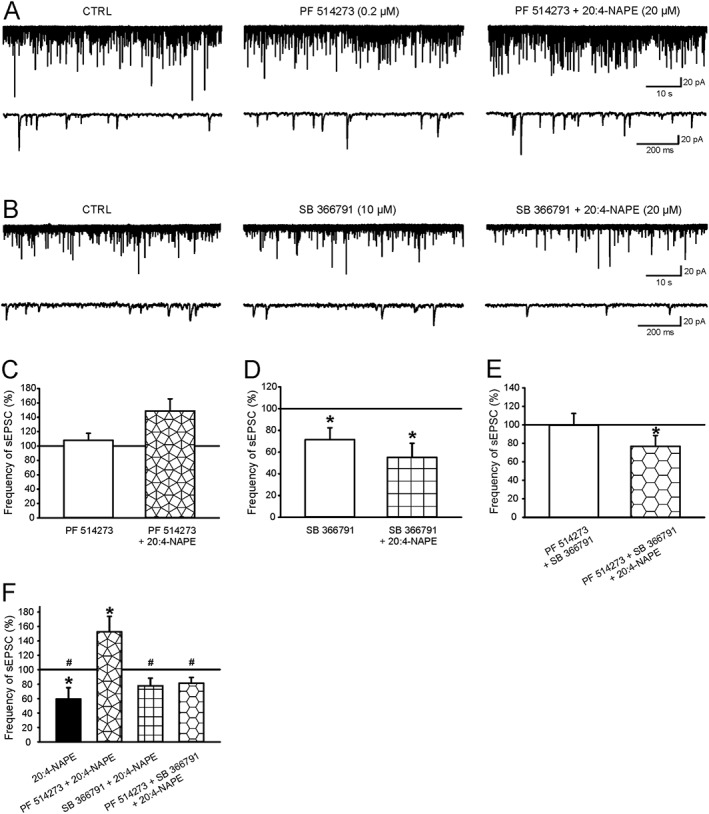Figure 6.

The effect of CB1 and TRPV1 antagonists on 20:4‐NAPE‐induced inhibition of sEPSC frequency under inflammatory conditions: (A, C) The application of PF514273 (0.2 μM, n = 16) did not change the frequency of sEPSCs. Subsequent co‐application of PF514273 (0.2 μM) and 20:4‐NAPE (20 μM) did not significantly change the frequency of sEPSCs, compared with control. (B, D) The frequency of sEPSCs significantly decreased during application of SB366791 (10 μM). *P < 0.05, significantly different from control; repeated measures (RM) ANOVA on ranks followed by Student–Newman–Keuls test; n = 16, In the presence of SB366791 (10 μM), 20:4‐NAPE (20 μM) induced a stronger decrease of sEPSC frequency. *P < 0.05, significantly different from control; RM ANOVA on ranks followed by Student–Newman–Keuls test. (E) The combined application of PF514273 (0.2 μM) and SB366791 (10 μM) did not change the frequency of sEPSCs. In the presence of both antagonists, 20:4‐NAPE (20 μM) significantly decreased the frequency of sEPSCs, compared with control. *P < 0.05, significantly different from control; RM ANOVA on ranks followed by Student–Newman–Keuls test; n = 15. (F) The same data are shown as a percentage of previous recording conditions: 20:4‐NAPE (n = 9) versus sEPSC basal frequency, PF514237 + 20:4‐NAPE versus PF514273 (n = 16) pretreatment, SB366791 + 20:4‐NAPE versus SB366791 (n = 16) pretreatment and PF514237 + SB366791 + 20:4‐NAPE versus both antagonists pretreatment (n = 15). *P < 0.05, significantly different from pretreatment, Wilcoxon signed‐rank test. # P < 0.05, significantly different from PF514237 + 20:4‐NAPE co‐application, one‐way ANOVA followed by Student–Newman–Keuls test.
